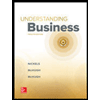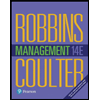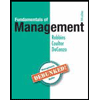he question below is from the attached image of a video case file from Operations Management: Processes and Supply Chains (11th Edition) by Krajewski, L. J., Malhotra, M. K. & Ritzman, L. P. Attached a video case discussion from chapter 12. Question three is here below: 3. Regarding the design of the Washable Deluxe Painting Kit supply chain, Crayola must evaluate the strategy of next-shoring in Asia or retaining an existing network that involves the assembly of the kits in the U.S. Compare and contrast these two supply chain designs from perspective of the decision factors and pitfalls for outsourcing discussed in the text
he question below is from the attached image of a video case file from Operations Management: Processes and Supply Chains (11th Edition) by Krajewski, L. J., Malhotra, M. K. & Ritzman, L. P. Attached a video case discussion from chapter 12. Question three is here below: 3. Regarding the design of the Washable Deluxe Painting Kit supply chain, Crayola must evaluate the strategy of next-shoring in Asia or retaining an existing network that involves the assembly of the kits in the U.S. Compare and contrast these two supply chain designs from perspective of the decision factors and pitfalls for outsourcing discussed in the text
Chapter1: Taking Risks And Making Profits Within The Dynamic Business Environment
Section: Chapter Questions
Problem 1CE
Related questions
Question
The question below is from the attached image of a video case file from Operations Management: Processes and Supply Chains (11th Edition) by Krajewski, L. J., Malhotra, M. K. & Ritzman, L. P.
Attached a video case discussion from chapter 12. Question three is here below:
3. Regarding the design of the Washable Deluxe Painting Kit supply chain, Crayola must evaluate the strategy of next-shoring in Asia or retaining an existing network that involves the assembly of the kits in the U.S. Compare and contrast these two supply chain designs from perspective of the decision factors and pitfalls for outsourcing discussed in the text

Transcribed Image Text:VIDEO CASE
Supply Chain Design at Crayola
Crayola LLC is a profitable wholly-owned subsidiary of Hallmark Cards of
Kansas City, Missouri. The company's world headquarters are located in
Easton, Pennsylvania and house marketing, sales, operations & manufactur-
ing, finance, R&D, Internet services, customer care consumer affairs and cor-
porate communications. Sales offices in Easton, Bentonville, Arkansas, and
Minneapolis manage domestic accounts, while offices in Canada, Mexico,
France, Italy, Japan, and Hong Kong handle international business. The
Global Operations Division in Easton is responsible for the sourcing, quality,
manufacturing, and logistics of Crayola products worldwide.
Two thirds of what Crayola sells globally is produced in its three Penn-
Washable
DeluxePainting Kit
Crsyola,
sylvania facilities in the Lehigh Valley. The "Forks I" plant is devoted to man-
ufacturing crayons and markers, the "Forks II" plant handles plastic molding,
and the Lehigh Valley Industrial Park (LVIP) plant creates paints, modeling
compounds, activity kits, and Silly Putty®. A single 800,000 square foot
distribution center in nearby Bethlehem, Pennsylvania handles finished
goods for logistics to U.S. and international customers, and to global busi-
ness units.
JEABILN m OES OF
4 VATERCOLOR PAINTS 4 BRISHES-55
AT SACCI
The Washable Deluxe Painting Kit, assembled at Crayola's Lehigh
Valley Industrial Park plant, contains paints and watercolors produced in
the USA and paint brushes, a smock, and a sponge produced in Asia.
Demand for the kit has grown substantially in international markets,
prompting a redesign of the supply chain so that Asian demand can
be satisfied by Asian production facilities capable of producing and
assembling the entire kit.
Each plant and its products have their own unique supply chains be-
cause the raw materials, suppliers and requirements all differ. For example,
paraffin wax for crayons comes from sources in Louisiana and Pennsylvania
via rail tanker cars twice a week, so proximity to the railroad is essential for
the Forks I plant making crayons. All raw materials for each supply chain
are first evaluated by independent board-certified toxicologists so Crayola can
assure its products are not only of the highest quality, but also safe and non-
toxic. Then, design hazard and risk assessments are done for all products
during development to assure production meets the stringent standards set
by the Art and Creative Materials Institute (ACMI).
Pete Ruggiero, Executive Vice President-Global Operations and his
team have responsibility for designing supply chains that are innovative, resil-
ient, responsive, and sustainable while assuring quality, ethics and cost con-
siderations are met. Whenever the company's marketing division develops a
new product kit that might contain paints, clays, crayons, markers or other
expand sales into the growing Asian market. The kit's paints and watercolors
are made by Crayola in the U.S., but the paintbrushes come from China, the
smocks come from Vietnam, and the sponges come from China. Labor costs
for assembling the kits in the U.S. is a significant component, so if Crayola
wants to sell the kits internationally, it needs to explore whether it makes
sense to keep the existing supply chain design in place, or make a change
to begin producing the kits closer to the growth in its international customer
producte tho cupplyLchain COurcin g of tho row matoriale ac woll ac tho down
booo The lynohpin of thie dooigion io that olL oompo nonto (inoluding point

Transcribed Image Text:expand sales into the growing Asian market. The kit's paints and watercolors
are made by Crayola in the U.S., but the paintbrushes come from China, the
smocks come from Vietnam, and the sponges come from China. Labor costs
for assembling the kits in the U.S. is a significant component, so if Crayola
wants to sell the kits internationally, it needs to explore whether it makes
sense to keep the existing supply chain design in place, or make a change
to begin producing the kits closer to the growth in its international customer
base. The lynchpin of this decision is that all components (including paint
and watercolor trays historically manufactured in the United States) need to
be made in Asia to make production efficient, and minimize duties and lead
times. By producing the entire product–including its components and pack-
aging-in Asia, Crayola is able to optimize its delivered cost to the markets.
Producing this product in the U.S. and shipping it to Asia would be an impedi-
ment because of cost and lead time challenges.
during development to assure production meets the stringent standards set
by the Art and Creative Materials Institute (ACMI).
Pete Ruggiero, Executive Vice President-Global Operations and his
team have responsibility for designing supply chains that are innovative, resil-
ient, responsive, and sustainable while assuring quality, ethics and cost con-
siderations are met. Whenever the company's marketing division develops a
new product kit that might contain paints, clays, crayons, markers or other
products, the supply chain sourcing of the raw materials as well as the down-
stream production processes must be addressed to be sure the forecasted
demand can be accommodated within the existing facilities. Not long ago, the
company introduced an innovative new product called ColorWonder® that con-
sists of pens that only write on the special paper they are packed with for sale.
This required examining whether the existing supply chain could support the
addition of producing the specialized ink markers, where to source the coated
paper, and how to best create the kits containing both markers and paper.
Now in production, ColorWonder® is a best seller worldwide, with nearly
40 percent of Japanese sales coming from this product alone. Managers
received feedback from the market that the pens in the kits were lasting
longer than the paper, so the supply chain responded by creating separate
paper packets so consumers may purchase just the paper after the initial
pages in the kit are used. The result of this action has had a ripple effect on
the demand for markers, which is now lower, since consumers are buying
fewer full kits but more Color Wonder® books, so the supply chain and pro-
duction had to adjust once again.
Another major challenge is the assembly of kits whose components
are derived from diverse supply chains and assembled into finished products
in the company's LVIP plant. An example is the popular Washable Deluxe
Painting Kit®. The kit consists of paints and watercolors, paint brushes,
smocks for the artist, and sponges for special effects. The company wants to
QUESTIONS
1. Describe the text's four external and internal pressures on supply chain
design as they relate to Crayola's supply chains for ColorWonder® and
Washable Deluxe Painting Kit®.
2. Review the strategic implications of supply chains as described in the
text. Does Crayola have efficient or responsive supply chains, or both?
Explain your position.
3. Regarding the design of the Washable Deluxe Painting Kit® supply
chain, Crayola must evaluate the strategy of next-shoring in Asia or
retaining an existing network that involves the assembly of the kits in
the U.S. Compare and contrast these two supply chain designs from
perspective of the decision factors and pitfalls for outsourcing dis-
cussed in the text.
Expert Solution
This question has been solved!
Explore an expertly crafted, step-by-step solution for a thorough understanding of key concepts.
Step by step
Solved in 3 steps

Recommended textbooks for you

Understanding Business
Management
ISBN:
9781259929434
Author:
William Nickels
Publisher:
McGraw-Hill Education

Management (14th Edition)
Management
ISBN:
9780134527604
Author:
Stephen P. Robbins, Mary A. Coulter
Publisher:
PEARSON

Spreadsheet Modeling & Decision Analysis: A Pract…
Management
ISBN:
9781305947412
Author:
Cliff Ragsdale
Publisher:
Cengage Learning

Understanding Business
Management
ISBN:
9781259929434
Author:
William Nickels
Publisher:
McGraw-Hill Education

Management (14th Edition)
Management
ISBN:
9780134527604
Author:
Stephen P. Robbins, Mary A. Coulter
Publisher:
PEARSON

Spreadsheet Modeling & Decision Analysis: A Pract…
Management
ISBN:
9781305947412
Author:
Cliff Ragsdale
Publisher:
Cengage Learning

Management Information Systems: Managing The Digi…
Management
ISBN:
9780135191798
Author:
Kenneth C. Laudon, Jane P. Laudon
Publisher:
PEARSON

Business Essentials (12th Edition) (What's New in…
Management
ISBN:
9780134728391
Author:
Ronald J. Ebert, Ricky W. Griffin
Publisher:
PEARSON

Fundamentals of Management (10th Edition)
Management
ISBN:
9780134237473
Author:
Stephen P. Robbins, Mary A. Coulter, David A. De Cenzo
Publisher:
PEARSON